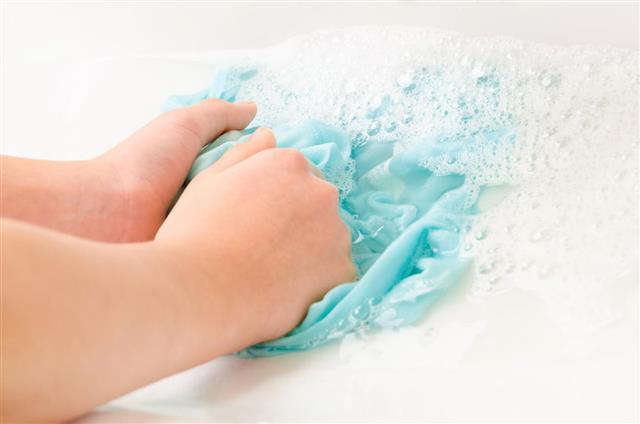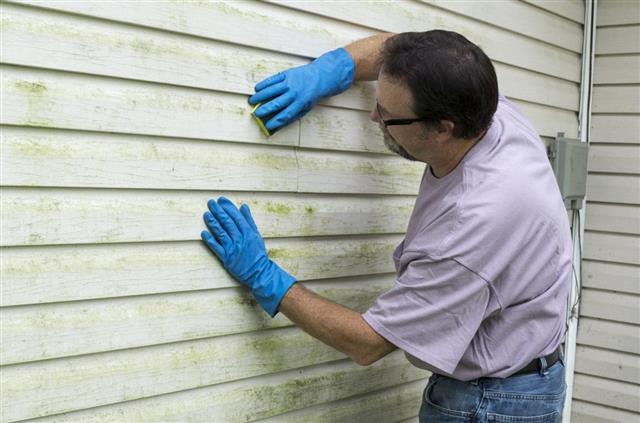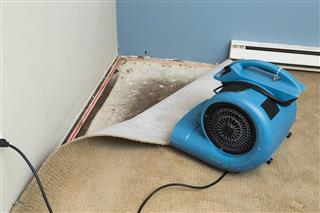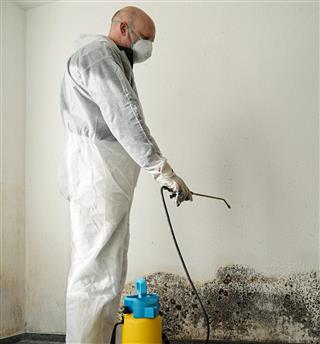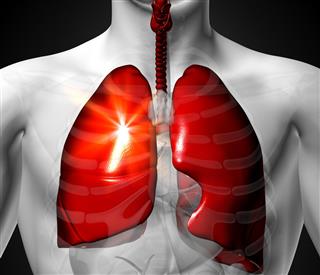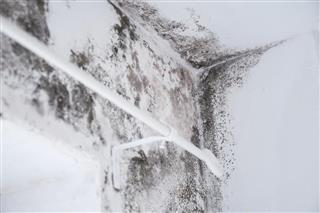
Keeping your home and your belongings clean and dry, well-swept, and well-brushed is the main thing. Black mold is a type of fungus that grows on damp surfaces and spoils the look of the house, along with causing health problems for the inhabitants.
Black mold is a thin, black fungal growth, scientifically known as Stachybotrys chartarum or Stachybotrys atra, which is usually found in places with high humidity or too much dampness or poor ventilation. Its spores occur naturally in the atmosphere and settle and grow wherever conditions are suitable for them. It can grow on just about any kind of surface―clothes, books, shoes, bags, curtains, rugs, carpets, mattresses, wood furniture, bathroom tiles, walls, ceilings, and so on. Usually, synthetic fabrics like nylon, polyester, and acrylic are immune. Given its toxic nature and its ability to fatally affect the lungs, black mold is not something you should be growing inside your home if you can avoid it. The moment you see the fungi anywhere in your house―be it your clothes or household items or room walls or ceiling―it should be removed forthwith.
Effects of Black Mold on Our Health
Black mold has very adverse effects on our health. Its spores are easily inhaled, which can lead to nosebleeds and cause internal bleeding in the lungs. People affected by long-term exposure to such molds are prone to respiratory problems, sinus problems, headaches, asthma, skin problems, and mental deterioration and instability. It can even prove fatal in cases of pregnant women and very young children. For these reasons, mold removal, remediation, and abatement becomes all the more important.
Removing Black Mold
Brush off all the black mold from the surface. Preferably take the object outside your house before you brush off the mold. Or you could even spread newspaper sheets on the floor and brush the mold onto that. Another option is to vacuum clean everything. This will prevent the mold spores from lingering around and regenerating.
From Fabric
In case of fabrics, brushing off the mold won’t be enough, you may have to apply bleach to remove the mold stains. Just make sure beforehand that these fabrics can withstand bleaching―silks and woolen items should never be bleached; non-chlorine bleaches usually work fine with all other fabrics. You will also need to wash the clothes with a good detergent or, if they are not washable, get them dry-cleaned. As much as possible, after normal washing, clothes should be allowed to dry naturally in the sun. Never put away soiled or still-wet clothes in the closet. That’s asking for trouble.
From Carpets, Upholstery, and the Like
To remove black mold, vacuum-clean carpets, mattresses, upholstery, rugs, etc. You can also apply soap suds and then wipe clean with a damp cloth but don’t get too much water on them. Dry them well and preferably under natural sunlight. Clean leather goods―bags, shoes, and so on―with a mixture of alcohol and water. Polish them with a little wax if possible.
From Books and Papers
For black mold removal from books and papers, clean them gently with a soapy cloth, then with a clean moist cloth, and then keep them for drying. Scrub bathrooms, walls, and ceilings with a good brush. The same applies to furniture cleaning. Scrub enough to clean the mold, but not as much to damage the surface.
Black Mold Remediation in the Long Run
Well, obviously as mentioned, you should get rid of molds as soon as you notice them developing. Mold removal is tedious, but it is easy enough to get rid of it in the early stages. If the contamination is too ancient and too widespread, you may have to consult professional cleaners. Check your home for leakages in the walls, the basement, the roof, and in any other possible places. In order to prevent future growth, you will have to eliminate the basic source of dampness and this may require some major overhauling of your home. This could turn out to be a bit expensive, but worth it in the long run. Black mold remediation and abatement will protect your health and save all your stuff from being damaged or destroyed.
As they say, prevention is better than cure, so removal of black molds and remediation is possible, but prevention is a better option. Keeping your home clean is a crucial thing. Installing air conditioners, dehumidifiers, and electric fans will help prevent black mold growth. It generally does not take root in dry and well-ventilated homes. Placing moisture-absorbing chemicals like silica gel, anhydrous calcium sulfate, etc., and protective, mold-inhibiting chemicals such as paradichlorobenzene crystals or paraformaldehyde powder amongst your belongings, and cleaning floors and walls with chlorine bleach or ammonia will mitigate mold development to a large extent.
